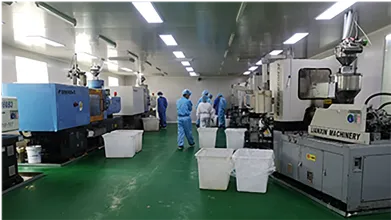
-
 Afrikaans
Afrikaans -
 Albanian
Albanian -
 Amharic
Amharic -
 Arabic
Arabic -
 Armenian
Armenian -
 Azerbaijani
Azerbaijani -
 Basque
Basque -
 Belarusian
Belarusian -
 Bengali
Bengali -
 Bosnian
Bosnian -
 Bulgarian
Bulgarian -
 Catalan
Catalan -
 Cebuano
Cebuano -
 Corsican
Corsican -
 Croatian
Croatian -
 Czech
Czech -
 Danish
Danish -
 Dutch
Dutch -
 English
English -
 Esperanto
Esperanto -
 Estonian
Estonian -
 Finnish
Finnish -
 French
French -
 Frisian
Frisian -
 Galician
Galician -
 Georgian
Georgian -
 German
German -
 Greek
Greek -
 Gujarati
Gujarati -
 Haitian Creole
Haitian Creole -
 hausa
hausa -
 hawaiian
hawaiian -
 Hebrew
Hebrew -
 Hindi
Hindi -
 Miao
Miao -
 Hungarian
Hungarian -
 Icelandic
Icelandic -
 igbo
igbo -
 Indonesian
Indonesian -
 irish
irish -
 Italian
Italian -
 Japanese
Japanese -
 Javanese
Javanese -
 Kannada
Kannada -
 kazakh
kazakh -
 Khmer
Khmer -
 Rwandese
Rwandese -
 Korean
Korean -
 Kurdish
Kurdish -
 Kyrgyz
Kyrgyz -
 Lao
Lao -
 Latin
Latin -
 Latvian
Latvian -
 Lithuanian
Lithuanian -
 Luxembourgish
Luxembourgish -
 Macedonian
Macedonian -
 Malgashi
Malgashi -
 Malay
Malay -
 Malayalam
Malayalam -
 Maltese
Maltese -
 Maori
Maori -
 Marathi
Marathi -
 Mongolian
Mongolian -
 Myanmar
Myanmar -
 Nepali
Nepali -
 Norwegian
Norwegian -
 Norwegian
Norwegian -
 Occitan
Occitan -
 Pashto
Pashto -
 Persian
Persian -
 Polish
Polish -
 Portuguese
Portuguese -
 Punjabi
Punjabi -
 Romanian
Romanian -
 Russian
Russian -
 Samoan
Samoan -
 Scottish Gaelic
Scottish Gaelic -
 Serbian
Serbian -
 Sesotho
Sesotho -
 Shona
Shona -
 Sindhi
Sindhi -
 Sinhala
Sinhala -
 Slovak
Slovak -
 Slovenian
Slovenian -
 Somali
Somali -
 Spanish
Spanish -
 Sundanese
Sundanese -
 Swahili
Swahili -
 Swedish
Swedish -
 Tagalog
Tagalog -
 Tajik
Tajik -
 Tamil
Tamil -
 Tatar
Tatar -
 Telugu
Telugu -
 Thai
Thai -
 Turkish
Turkish -
 Turkmen
Turkmen -
 Ukrainian
Ukrainian -
 Urdu
Urdu -
 Uighur
Uighur -
 Uzbek
Uzbek -
 Vietnamese
Vietnamese -
 Welsh
Welsh -
 Bantu
Bantu -
 Yiddish
Yiddish -
 Yoruba
Yoruba -
 Zulu
Zulu
Single-use Petri Dishes for Safe and Convenient Laboratory Culturing Applications
The Importance of Disposable Petri Plates in Microbiological Research
In the realm of microbiology, Petri plates play a pivotal role in culturing and studying microorganisms. Traditionally, these dishes were made of glass and required thorough cleaning and sterilization before reuse. However, with the advancement of technology and the growing need for efficiency in laboratories, disposable Petri plates have emerged as a revolutionary alternative. This article explores the significance of disposable Petri plates, their advantages, and their impact on scientific research and laboratory practices.
Disposable Petri plates are typically made from polystyrene or other plastic materials that are pre-sterilized and ready for use straight out of the package. This convenience eliminates the need for extensive cleaning and sterilization processes associated with reusable glass plates. In a fast-paced laboratory environment, time efficiency is crucial, and disposable plates offer significant time savings. Researchers can focus more on their experiments and less on the tedious aspects of cleaning equipment, leading to increased productivity.
The Importance of Disposable Petri Plates in Microbiological Research
Additionally, disposable Petri plates are cost-effective in the long run. While the initial investment may seem higher than purchasing glass plates, the savings in labor costs associated with cleaning and sterilization quickly offset this. Moreover, in many cases, disposable plates can be obtained in bulk, further driving down costs. Laboratories are increasingly recognizing that the convenience and safety provided by disposable Petri plates justify their use despite the initial monetary outlay.
disposable petri plates

The versatility of disposable Petri plates also enhances their appeal. They come in various sizes and types, including plates designed for specific applications, such as selective media for cultivating specific microorganisms. This adaptability allows researchers to choose the best-suited plates for their particular studies, enabling more precise experimentation and better results.
Moreover, the environmental impact of disposable products is a common concern. However, many manufacturers are now producing eco-friendly disposable Petri plates made from biodegradable materials. This innovation addresses sustainability concerns while maintaining the convenience and sterility that researchers rely on.
Another significant aspect is the global health considerations that have emerged in recent years. The COVID-19 pandemic underscored the need for rapid and safe laboratory practices to accommodate the increased testing and research demands. Disposable Petri plates facilitated the swift scaling up of microbiological studies and diagnostic testing, demonstrating their essential role in public health initiatives.
Moreover, the ease of disposal means that laboratories can swiftly handle biohazard waste without extensive sanitation protocols. This reduces the burden on lab personnel and ensures compliance with strict biosafety regulations, ultimately safeguarding personnel and the environment.
In conclusion, disposable Petri plates have become an indispensable tool in microbiological research and laboratory practices. Their time-saving convenience, enhanced sterility, cost-effectiveness, versatility, and positive environmental impact contribute to their growing popularity in research settings. As the field of microbiology continues to advance, the adoption of disposable Petri plates is likely to expand, supporting a new era of efficiency and reliability in scientific exploration.
-
Premium 200ml Medicine Bottles – Leakproof Dropper & Spray Options at Best PriceNewsJul.05,2025
-
PTFE Centrifuge Tubes - Chemical Resistant, Leak-proof, Ideal for Laboratory UseNewsJul.05,2025
-
Premium Metal Dropper Bottle for Precise Dispensing 250ml & 1ml Options AvailableNewsJul.04,2025
-
20 ml Headspace Vials - High Quality Polyethylene & Plastic Vials for Lab UseNewsJul.04,2025
-
Small Bottle with Pipette - Precise Dispensing 100ml Pipette Bottles for Essential Oils & Lab UseNewsJun.24,2025
-
Acetic Anhydride Bottle for Accurate Dropper Measurement in Pharmacy Use High-Quality Dropper BottlesNewsJun.10,2025






















